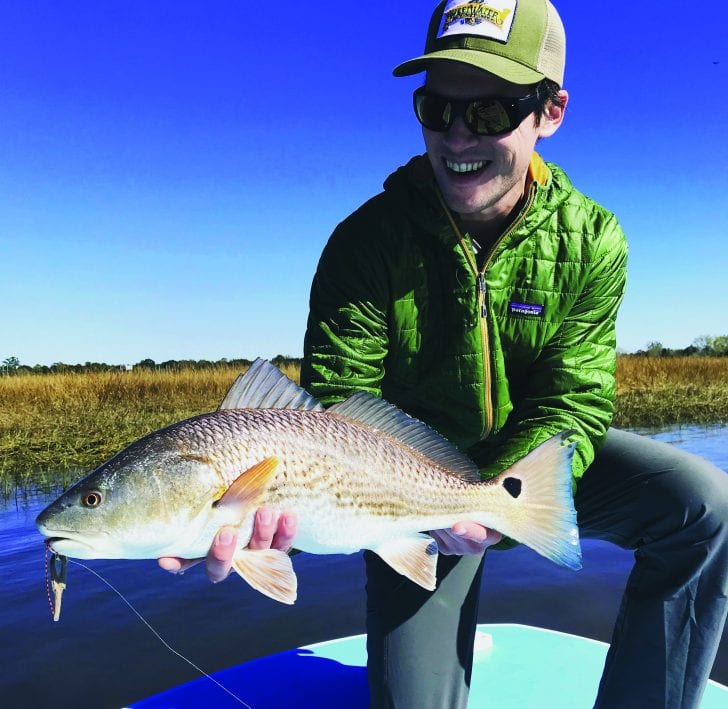There is no denying it- winter is here, icy boat decks and all. All is not lost, however, fishing can be spectacular this time of year as long as you adjust your game plan.
Gone are the humid days of fish tailing in the high tide grass. The crabs and most of the bait are gone and the name of the game becomes survival. Food is scare and the predators (dolphins) have the advantage with the clear water.
Redfish and trout will gather in large schools to optimize their chances at making it until spring. Catching one here requires the utmost in stealth- fooling hundreds of eyes isn’t easy.
Start by using longer smaller leaders in the 12-16lb fluorocarbon range of at least 10’. The extra leader length will give you a slight advantage in remaining undetected. These are the only months of the year I will fish fluoro leaders- they sink faster than monofiliment, which will keep any slack out of your line when using lighter flies.
Flies should be small for the most part and I’ve always found that darker colors work best, with black and purple being the local favorite combo.
Do not use flies that are too heavy or too bulky as they can spook the school when they land. Bead chain Clouser minnows and many of the Enrico Puglisi baitfish patterns would be my first bet.
On a calm day, the sight of hundreds of Redfish pushing down a bank will be hard to miss
Recently in past winters I’ve had success with a shrimp/crab hybrid fly called the Avalon. Developed for permit and bonefish in Cuba, the Avalon is almost irresistible to redfish.
Small brass beads on a mono loop create a small rattle and helps to the fly sink correctly. Look for mud covered bottoms around low tide to locate the redfish schools.
On a calm day, the sight of hundreds of redfish pushing down a bank will be hard to miss. While not always feasible, the best scenario is to set up just off the path of the fish and as they approach, have a fly waiting in the water.
Casting early will give you the advantage since they will not see your cast in the air, or hear/feel it hit the water. When the lead fish is 6-8’ from the fly, one bump will be all that’s needed to seal the deal. Avoid overly frantic movement of the fly also, remember its cold.
Trout will remain most of the early winter just off the points and in the current rips where water is flowing out of a creek. Use heavier flies with lead eyes to get the fly down to the 5-7’ zone. If you use a depth finder on your boat, find the small holes and depressions that are abnormal and target these areas as well for seatrout.
So get low and slow. Its the most visible the fish will be all year so take advantage and beat the cold this winter.
Scotty Davis – Lowcountry Fly Shop / Lowcountryflyshop.com
You may also enjoy reading Pond Hopping for Big Fun



